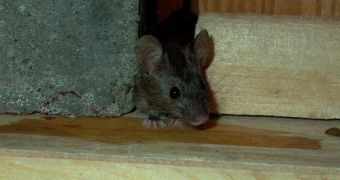Investigators at the Rice University say that house mice are evolving to withstand the impact that a common poison is having on the general population. This resistance is developing in unexpected ways.
Experts think they identified two ways through which such resistance was achieved. It took the mice millennia to get here, seeing how humans have always tried using a variety of means for destroying them, or at least driving them away from their homes.
The new investigation was conducted on specimens of ordinary European house mouse, which display a genetic mutation that enables them to remain alive after being exposed to poison. The research effort was led by expert Michael Kohn.
According to the team, the mutated gene is called vkorc1, and its job is usually to manage the processing of vitamin K in the body. The gene is present in all mammals, completing the same function regardless of species.
One of the most common rodent poisons relies on the use of the human blood thinner chemical warfarin. But the genetic mutation mice suffered allowed them to become immune to the effects of this toxic agent, the Rice group explains.
The two methods mice used to become immune to the effects of warfarin include point mutations and horizontal gene transfer. Both have the same effect, but arrive at it differently, the researchers add.
Point mutation is the “standard” type of evolution, in which animals experience genetic anomalies that are passed down from generation to generation if they are useful. Algerian mice (Mus spretus) are now resistant to warfarin because they had a vitamin K-deficient diet.
This was the animal's way of adapting to the desert, the harsh environment it inhabits. The genetic change took just 10 years to propagate through populations. Warfarin was put into use in the 1950s, and the first modified mice appeared as early as the 1960s.
The second process – horizontal gene transfer – usually takes place in microbes, and has never been fully understood. The new study provides an in-depth view into how it functions in mammals.
Kohn explains that the vkorc1 gene mutation was transferred from Algerian to European house mice directly, which is the very definition of HGT. Horizontal transfer means that a mutation is passed between living individuals, not from parents to offspring.
“In the very distant past, these mice wouldn't even meet. With the spread of agriculture thousands of years ago in the Fertile Crescent, humans brought mice with them – unwillingly,” he adds.
“That brought these two types of mice into contact, and they started doing their thing, hybridizing here and there,” Kohn says. The mutations were most likely handed over in Spain, where the two species overlap geographically.
“The human factor in this study is quite clear. One of the gravest concerns to conservation of biodiversity is the inadvertent spread of invasive species across the globe,” the investigator says.
“In this study, this test came in the form of our desire to extirpate so-called pest species with poisons, which we use to get rid of microbes, bugs, weeds and even some mammals,” Kohn concludes.

 14 DAY TRIAL //
14 DAY TRIAL //